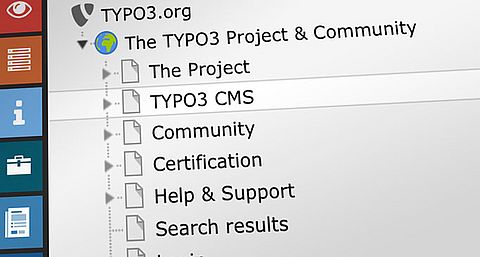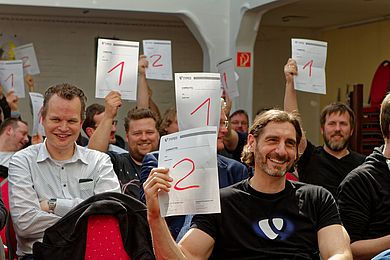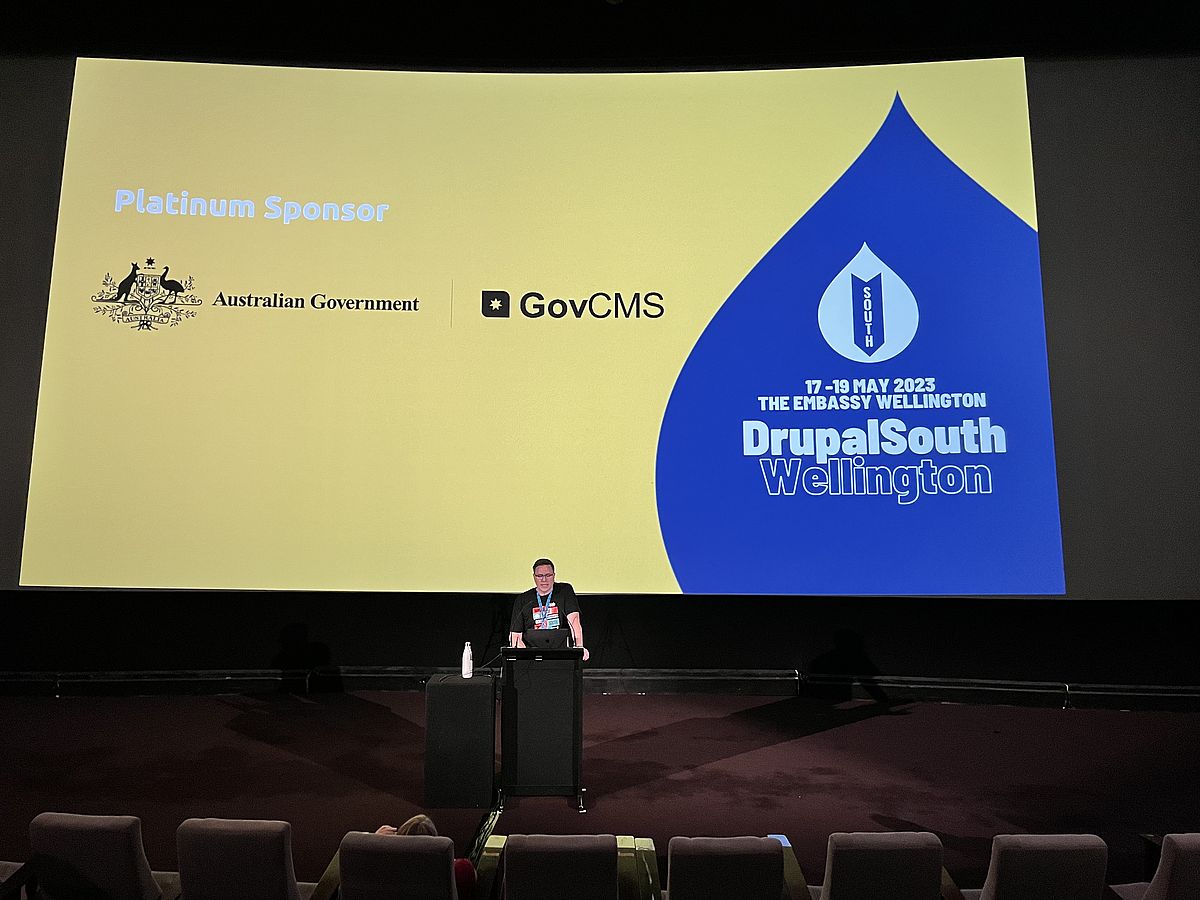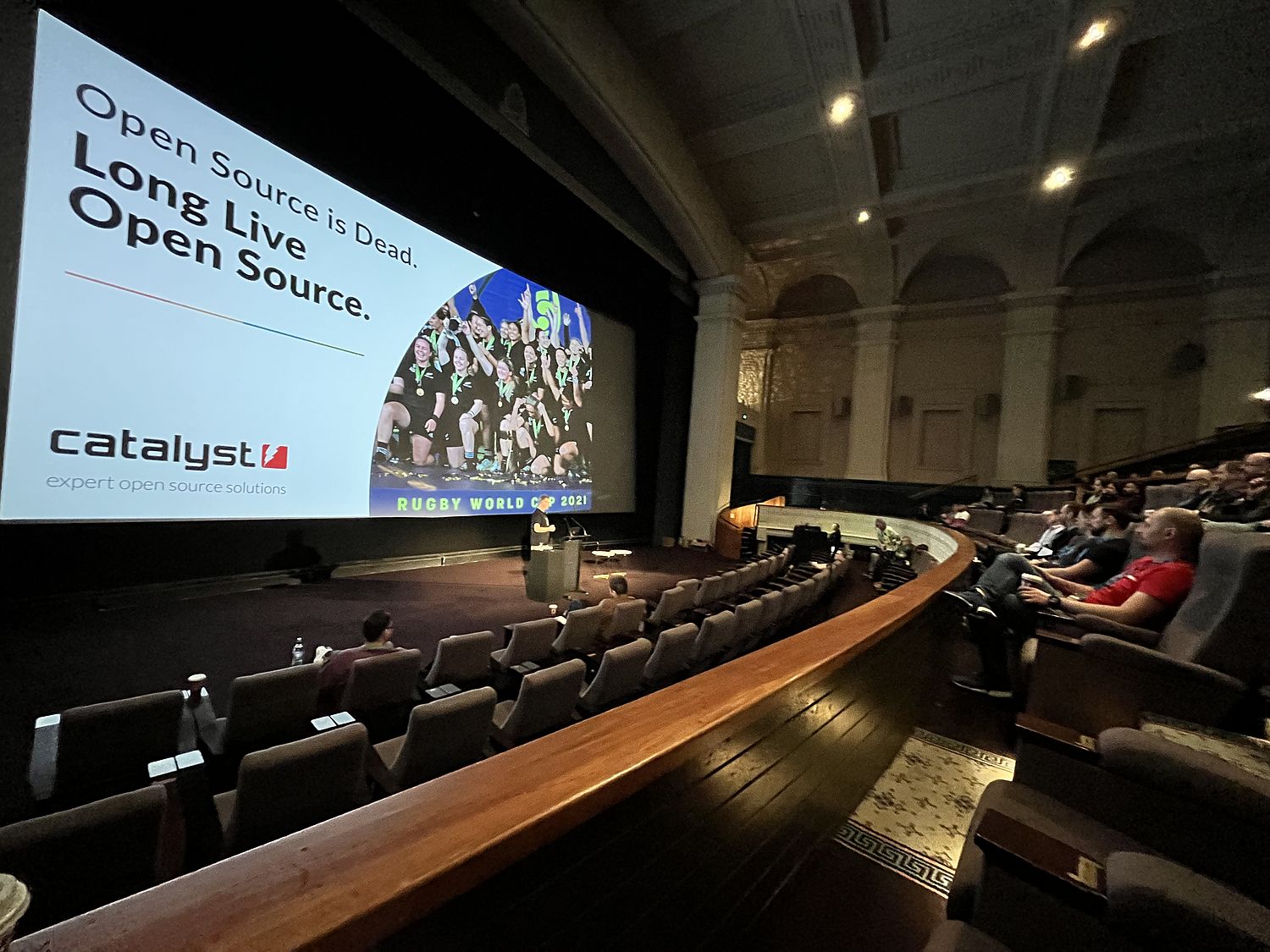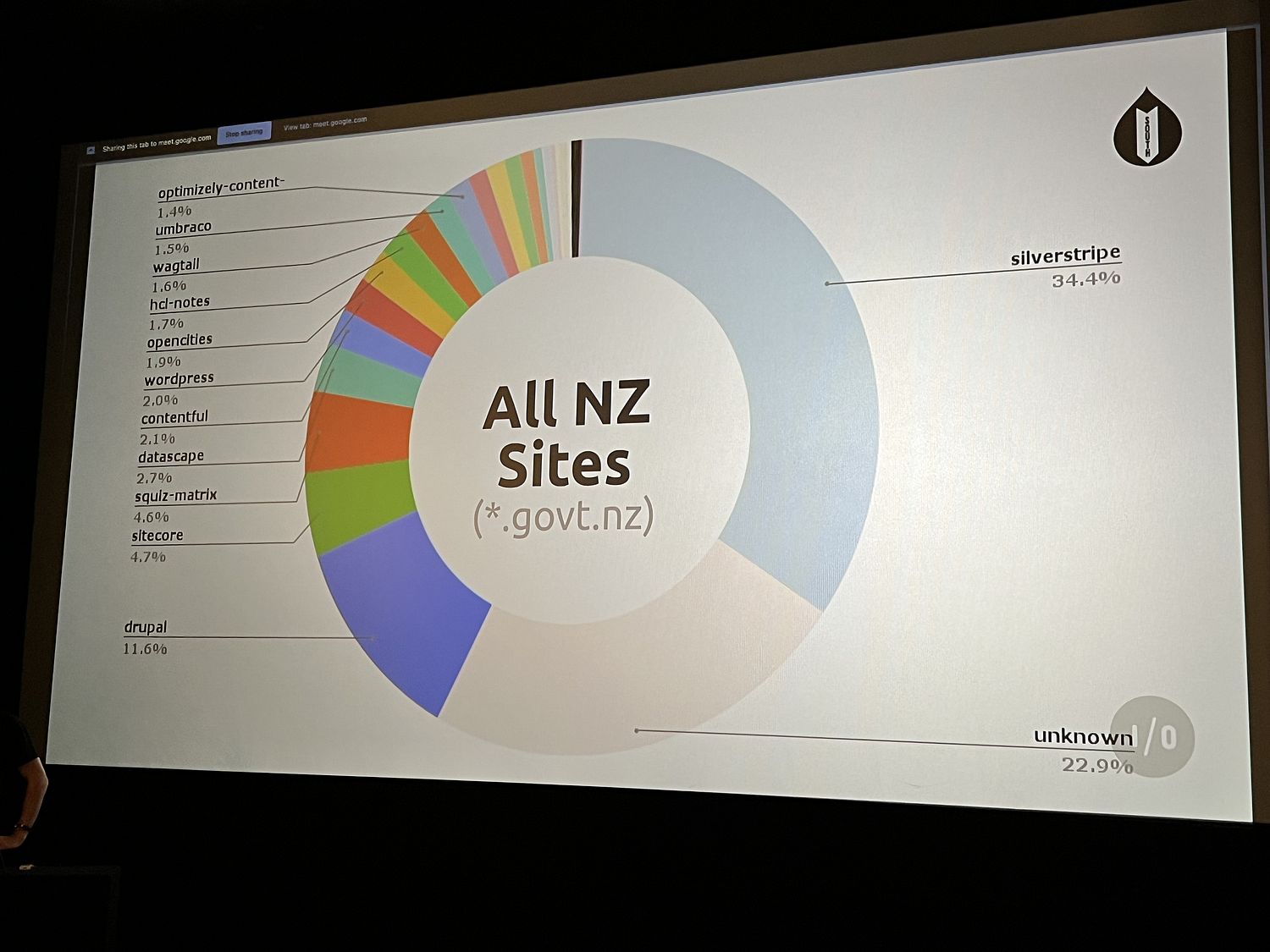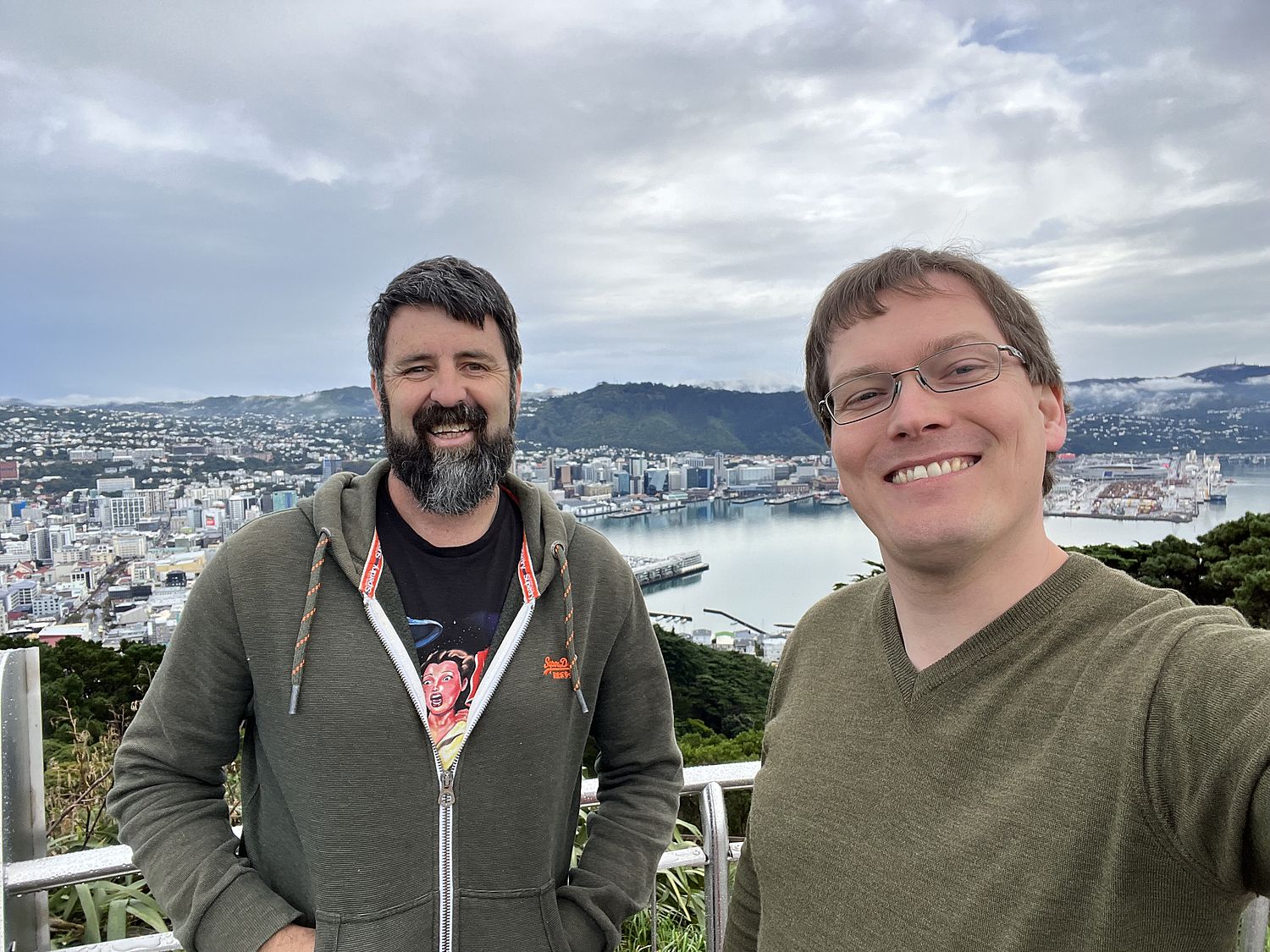Spending a year in New Zealand with my family has given me some opportunities to get to know the local open source community. This time I had the opportunity to go to Wellington, New Zealand, to meet with the Drupal folks at their event.
Mathias Bolt Lesniak attended DrupalSouth in Wellington, New Zealand, on 17–18 May 2023, as part of the Meet TYPO3 initiative. Mathias is a TYPO3 Association board member. See upcoming Meet TYPO3 events.
DrupalSouth is a regional Drupal-themed conference that happens every year, somewhere in Australia or New Zealand. It is organized by a volunteer team overseen by the DrupalSouth Steering Committee, a subcommittee of Linux Australia, the organization behind the Everything Open conference I attended in Melbourne, Australia, earlier in 2023.
A Grand Theater
The conference took place at the Embassy Theatre, a grand classical cinema in the center of New Zealand’s capital. The building consists of two smaller rooms and one very large cinema hall — with what must be the largest projection screen I have seen at any conference. The Embassy Theatre hosted the world premiere of the final Lord of the Rings movie and the first of the Hobbit movies.
The two-day event had three tracks. Each morning started with a keynote, we enjoyed ample food and coffee throughout the day, and there was a social event each evening.
Security is always an important topic, and the conference kicked off with Laura Bell Main’s talk on Securing the Software That Will Change the World in the main hall. (Recordings of all of the talks have been published in a playlist on the DrupalSouth YouTube channel.)

